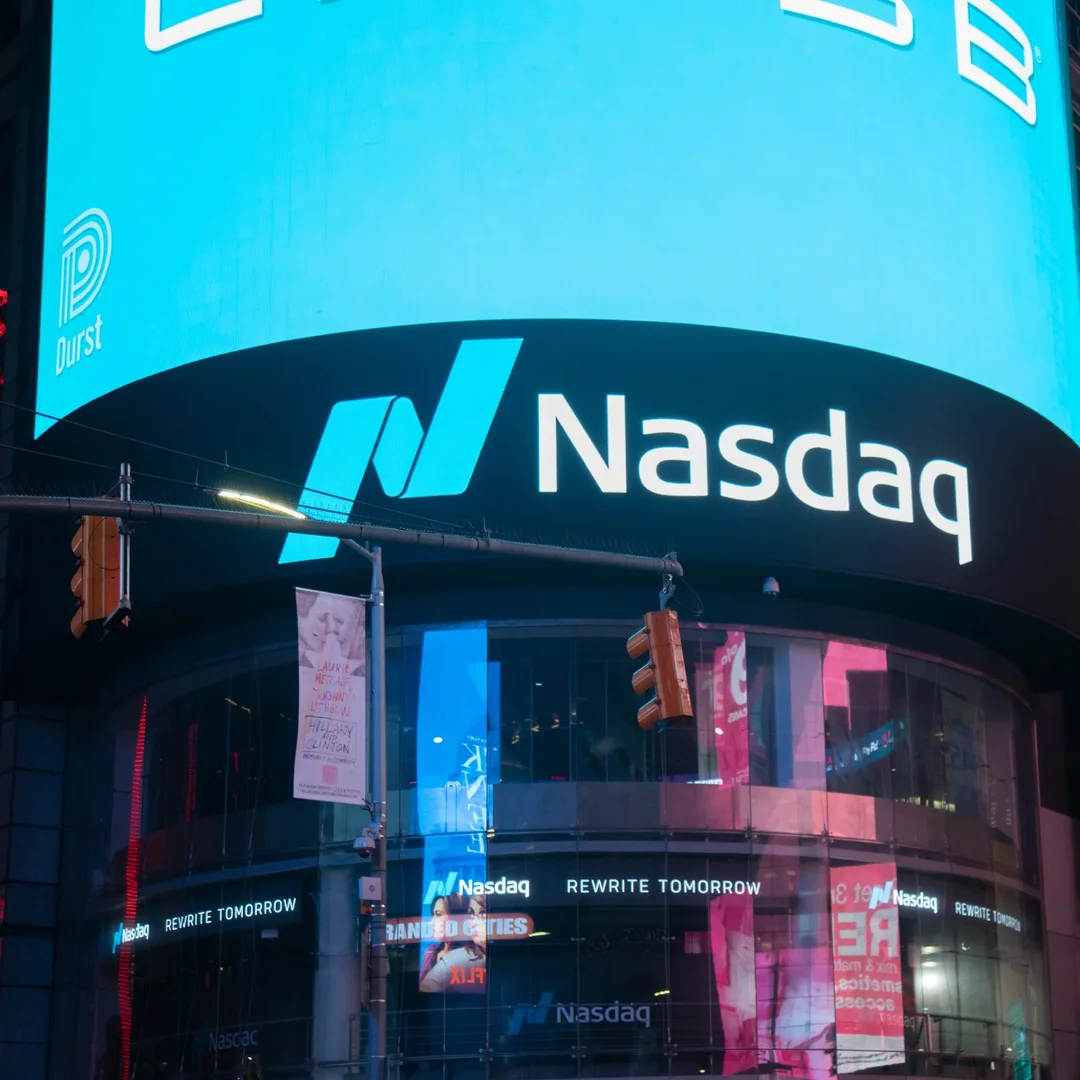What is the Nasdaq?

If you’re relatively new to investing, or you’re still thinking about getting started, it’s easy to feel overwhelmed by all of the different terms, definitions, and acronyms that are tossed around. While you don’t need to be a financial markets guru in order to be successful as an investor, it’s good to understand certain key concepts and terms.
One of the terms you’ve probably heard is “Nasdaq.” Not sure what it is? Below we define the Nasdaq, explore its history, and take a look at why it is so important in the world of investing.
What is the Nasdaq?
The Nasdaq can actually refer to two different concepts, depending on the context within which it is being used.
An acronym for the National Association of Securities Dealers Automated Quotations exchange, the Nasdaq is, first and foremost, an electronic exchange that investors use to buy and sell stocks (or shares of companies). There are currently more than 3,300 companies listed on the exchange. The exchange itself is owned by Nasdaq, Inc., a publicly traded company. When compared to other global stock exchanges in terms of market capitalization—the total number of shares outstanding for those companies times the value of each share—the Nasdaq exchange comes in second place, behind the New York Stock Exchange (NYSE) as of 2019.
In a broader sense, the word “Nasdaq” is also used to refer to the Nasdaq Composite Index, a stock market index which tracks the more than 3,300 companies listed on the Nasdaq exchange. In this regard, it is similar in many ways to the S&P 500, Dow Jones Industrial Average (DJIA), and other indexes.
Because it tracks so many companies, the Nasdaq index is often used as a barometer of the broader stock market. It is this second definition that investors are often referring to when they talk about the Nasdaq.
When was the Nasdaq founded?
The Nasdaq exchange was founded by the National Association of Securities Dealers (NASD) and began trading stocks on February 8, 1971, becoming the world’s first electronic stock market.
The Nasdaq was also the first US-based stock market to begin trading online. As such, many newly-formed companies during the so-called “dot-com bubble” chose to list on the Nasdaq.
What types of companies are included in the Nasdaq Composite Index?
The Nasdaq Composite Index tracks all of the companies listed on the Nasdaq exchange, a list that includes more than 3,300 companies.
Because of its history as both the world’s first electronic exchange and the world’s first online stock market, the Nasdaq has throughout its existence attracted a high percentage of technology stocks. Some of the major tech-focused stocks listed on the Nasdaq (and, as such, represented in the Nasdaq Composite Index) include Microsoft, Facebook, Apple, and Amazon. Generally speaking, investors often turn to the Nasdaq as a snapshot of how technology stocks are performing.
That being said, the index does have exposure to other sectors and industries, including financial, industrial, and consumer companies.
How can someone invest in the Nasdaq?
It’s possible to invest in Nasdaq, Inc. which owns the Nasdaq exchange, a publicly-traded company that trades under the ticker symbol NDAQ on the Nasdaq exchange. This means that someone could invest directly in the company that owns, operates and oversees the Nasdaq exchange.
But when most investors talk about investing in the Nasdaq, they are not usually talking about investing in Nasdaq, Inc. What they really mean is that they want to invest in the companies that broadly make up the Nasdaq Composite Index.
One way to invest in the Nasdaq Composite Index would be to purchase shares of each of the companies that make up the index. Unfortunately, doing so would be expensive—you’re talking about investing in thousands of companies—and out of reach for most individual investors.
Another, more realistic approach for most investors is to invest in a low-cost index fund or exchange traded fund (ETF) that tracks the Nasdaq Composite Index.
Why Invest in funds that mirror the Nasdaq index?
People invest in funds that mirror the Nasdaq (and other index-mirroring ETFs) for many reasons.
One of the main reasons is a desire for diversification: By investing in an ETF that tracks the Nasdaq, you are essentially purchasing shares of stock in more than 3,300 companies. Investing in such a large number of companies (as opposed to one or just a handful) can help you to reduce some of the risk involved in investing and limit wild swings in your portfolio’s valuation.
It is important to note, however, that investing in an index-tracking ETF alone does not remove all risk. To further limit risks involved in investing, experts recommend diversifying your investment portfolio further with other types of investments, such as bonds.
Another reason that people choose to invest in the Nasdaq is a desire to gain exposure to the technology sector of the market. As discussed above, the vast majority of tech-focused companies are listed on the Nasdaq as opposed to other indices, making it an ideal index to track for any investor interested in tech.
Ultimately, whether or not you choose to personally invest in the companies that make up the Nasdaq Composite Index, it can be a good idea to keep an eye on how the index is performing over time. Because it tracks so many companies (including many large, important companies), it is often used as a barometer of the general market and economy, much like the S&P 500 and the Dow.
This material has been presented for informational and educational purposes only. The views expressed in the articles above are generalized and may not be appropriate for all investors. The information contained in this article should not be construed as, and may not be used in connection with, an offer to sell, or a solicitation of an offer to buy or hold, an interest in any security or investment product. There is no guarantee that past performance will recur or result in a positive outcome. Carefully consider your financial situation, including investment objective, time horizon, risk tolerance, and fees prior to making any investment decisions. No level of diversification or asset allocation can ensure profits or guarantee against losses. Article contributors are not affiliated with Acorns Advisers, LLC. and do not provide investment advice to Acorns’ clients. Acorns is not engaged in rendering tax, legal or accounting advice. Please consult a qualified professional for this type of service.









